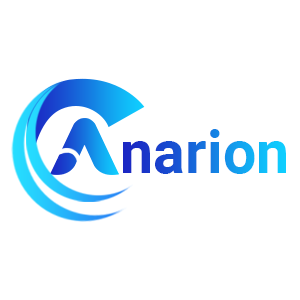RStudio VM by Anarion Technologies
RStudio is a powerful integrated development environment (IDE) specifically designed for the R programming language. It provides a comprehensive and user-friendly platform that caters to the needs of data scientists, statisticians, and researchers. The IDE integrates various tools and features to facilitate data analysis, statistical computing, and data visualization, making it an essential tool for anyone working with R.
One of RStudio’s key features is its intuitive interface, which includes a script editor, a console, and a variety of panes for managing data, plots, and packages. This layout allows users to write, execute, and debug R code efficiently. The IDE also supports a range of programming tasks, from basic data manipulation to advanced statistical modeling, providing users with the tools they need to conduct rigorous analyses and create insightful visualizations.
In addition to its core functionalities, RStudio excels in supporting reproducible research and dynamic reporting. With R Markdown, users can combine code, text, and visualizations into comprehensive reports that are easily shareable and maintainable. This capability enhances collaboration and transparency in data analysis projects.
Overall, RStudio stands out as a versatile and robust environment for working with R, offering an array of features that streamline the data analysis workflow and support complex analytical tasks. Its broad adoption in the data science community is a testament to its effectiveness and utility.
To subscribe to this product from Azure Marketplace and initiate an instance using the Azure compute service, follow these steps:
1. Navigate to Azure Marketplace and subscribe to the desired product.
2. Search for “virtual machines” and select “Virtual machines” under Services.
3. Click on “Add” in the Virtual machines page, which will lead you to the Create a virtual machine page.
4. In the Basics tab:
- Ensure the correct subscription is chosen under Project details.
- Opt for creating a new resource group by selecting “Create new resource group” and name it as “myResourceGroup.”
5. Under Instance details:
- Enter “myVM” as the Virtual machine name.
- Choose “East US” as the Region.
- Select “Ubuntu 18.04 LTS” as the Image.
- Leave other settings as default.
6. For Administrator account:
- Pick “SSH public key.”
- Provide your user name and paste your public key, ensuring no leading or trailing white spaces.
7. Under Inbound port rules > Public inbound ports:
- Choose “Allow selected ports.”
- Select “SSH (22)” and “HTTP (80)” from the drop-down.
8. Keep the remaining settings at their defaults and click on “Review + create” at the bottom of the page.
9. The “Create a virtual machine” page will display the details of the VM you’re about to create. Once ready, click on “Create.”
10. The deployment process will take a few minutes. Once it’s finished, proceed to the next section.
To connect to the virtual machine:
1. Access the overview page of your VM and click on “Connect.”
2. On the “Connect to virtual machine” page:
- Keep the default options for connecting via IP address over port 22.
- A connection command for logging in will be displayed. Click the button to copy the command. Here’s an example of what the SSH connection command looks like:
“`
ssh azureuser@10.111.12.123
“`
3. Using the same bash shell that you used to generate your SSH key pair, you can either reopen the Cloud Shell by selecting >_ again
or going to https://shell.azure.com/bash.
4. Paste the SSH connection command into the shell to initiate an SSH session.
Usage/Deployment Instructions
Anarion Technologies – RStudio
Note: Search product on Azure marketplace and
click on “Get it now”
Click on Continue
Click on Create
Creating a virtual
machine, enter or select appropriate values for zone, machine type, resource
group and so on as per your choice.
After Process of Create Virtual
Machine. You have got an Option Go to
Resource Group
Click Go to Resource Group
Click on the Network
Security Group: rstudio-nsg
Click on Inbound Security Rule
Click on Add
Add Port
Add Port
Destination Port Ranges Section*
(where default value is 8080)
8787
Select Protocol as TCP
Option Action is to be Allow
Click on Add
Click on Refresh
Copy the Public IP Address
Navigate to the URL: [ip]:8787,
replacing *[ip] with the IP address of your VM Machine. This will display the
login prompt.
To Create User, SSH into Terminal
& Run these Commands:
$ sudo su
$ cd ../..
$ adduser analyst
Back to Browser, fill up the
Username and Password:
Welcome to the RStudio Dashboard:
Runs R Programs on Console
Thanks!!
24X7 support provided for all the customers.
We are happy to help you.
Contact Number: +1 (415) 800-4585
Support E-mail: support@anariontech.com


